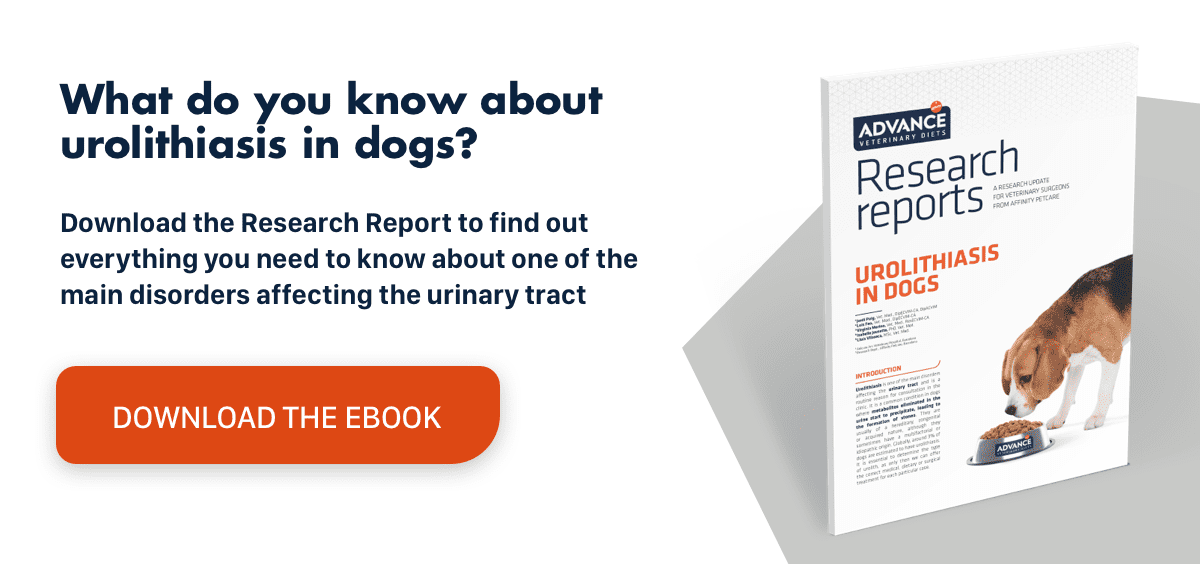Mastitis in dogs: diagnosis and treatment
Mastitis in dogs: how is it diagnosed?
Diagnosis is based on the case history, clinical picture and complementary tests.
It should be suspected in females during the postpartum period, in dogs experiencing a phantom pregnancy or in some cases after abrupt weaning or the death of newborns when there is:
- A lack of weight gain in the litter (<5% birth weight per day). The puppies’ health depends directly on the quality of the mother’s milk, and may sometimes be the only symptom of mastitis.
- Local compromise, ranging from inflammation to the formation of abscesses and glandular gangrene depending on the level of severity, accompanied by systemic clinical signs (anorexia, fever, vomiting) or even septic shock.
- Bleeding or purulent secretions.
- Hardening of the mammary glands, pain and ulcers.
Additional tests:
- Laboratory tests: can reveal data about inflammation such as left-shift leukocytosis or abnormal platelet counts in more severe cases. Cytology shows increased neutrophils and erythrocytes. Free or intracellular bacteria may be observed.
- Microbiological milk culture: this will guide the antibiotic therapy.
- Ultrasound of mammary glands: reduced tissue differentiation, echogenicity and blood flow.
It is important to establish a differential diagnosis with galactosis. Cases of mastitis typically course with a change in the colour of the milk, fever, anorexia and hot, painful glands upon palpation. Galactosis tends more to affect the cranial glands, with lower neutrophil and bacteria counts.
Mastitis in dogs: how should it be treated?
Treatment must be aggressive so that the female can assume her maternal role as soon as possible.
On the one hand, there is some controversy regarding whether to continue suckling. Continuing is generally recommended unless there are gangrenous abscesses or mastitis, since infected milk or which contains antibiotics is not usually a problem for puppies, but it is important to remember that the milk’s composition will be poorer. Otherwise, they must be fed artificially. Puppies fed by mothers receiving antibiotic therapy can be given probiotics to prevent antibiotic-associated diarrhoea. According to a study conducted following a microbiological analysis, the primary cause of most cases of septicaemia in newborn puppies is not bacteria in the mother’s milk.
Regarding treatment of the mastitis itself:
-
Broad-spectrum antibiotic therapy for 2–3 weeks. If the condition becomes chronic, select an antibiotic based on the results of the culture and antibiogram. The most used antibiotics are:
- Amoxicillin 20 mg/kg PO, IM or SC every 12 h
- Amoxicillin/clavulanic acid 15 mg/kg PO every 12 h
- Cephalexin 22–30 mg/kg PO every 8–12 h
- Cefoxitin 22 mg/kg IM or IV every 8 h
-
Anti-inflammatories to relieve congestion and alleviate pain. Infected glands may be milked periodically to reduce inflammation. Hot water compresses can also be applied. Once the puppies are weaned, milk production can be reduced with prolactin inhibitors (cabergoline).
-
Surgery: drainage of abscesses in the mammary glands, debridement and even mastectomy are options for the most severe cases.
Finally, preventive treatment. Given that in most cases the infection occurs upstream through trauma to the mammary glands, hygiene is important in both the glands and the puppies, trimming their nails, and also ensure that all glands are used.

